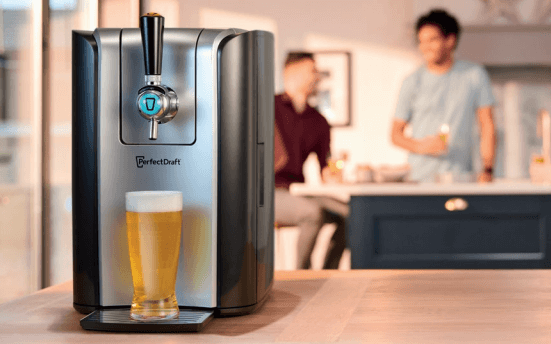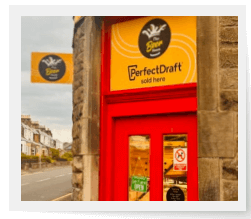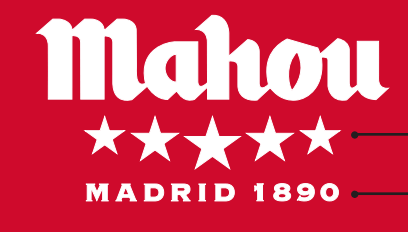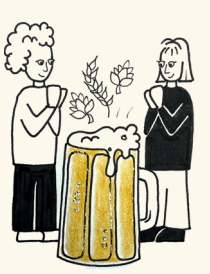Trappist beer and Belgium are inextricably linked in our minds, and no wonder: Out of only eleven Trappist breweries in the world, six of them are in Belgium. Achel, Chimay, Orval, Rochefort, Westmalle and Westvleteren breweries all hold the Authentic Trappist Product designation, which shows that they adhere to a number of rules around where and how their beer is produced: within the monastery, by or under the supervision of the monks, and not for profit. Trappist breweries produce a diverse range of styles, from dark, fruity Westmalle Dubbel to Chimay Brewery's sweet and floral Tripel through to dry-hopped, zingy Orval brewed with wild yeast. Abbey beers can be similar to Trappist beers, but the Abbey label doesn't come with any guarantee of authenticity - they merely have some sort of monastic link, though that link can be anything from being produced by monks who are Benedictine rather than Trappist, down to merely being named after a made-up monastery.
One widely brewed style is the Belgian blond. Refreshing, gently hopped and slightly sweet with a lingering bitterness and delicate yeast character which masks this style's deceptive 6%-8% ABV, it's no surprise that blonds such as Brugse Zot, Maredsous Blond and Kasteel Blond 7 are so popular. Another common type of pale in Belgium is the tripel, but this style is stronger than the blond at around 8%-10% ABV. Tripels like Westmalle Tripel and Chimay White are golden and robust, with a strong malty backbone, fruity, floral notes, a touch of peppery spice and a dry finish. To complicate matters, there are also strong pale ales, akin to a tripel but with a lighter, crisper body; the best known example of this is Duvel brewery's eponymous flagship beer, which takes its name from a dialect word for 'devil', and uses pilsner malt for a dry, clean character.
Dubbels such as St Bernardus Prior 8 and Rochefort 6 are also widespread. These strong brown ales (around 6%-8% ABV) are rich and malty, with flavours of toffee and sweet dried fruit. Dubbel was developed in the mid-1800s at Westmalle and quickly gained popularity, although Westmalle Dubbel as we know it today originated in 1926; still, quite a pedigree! Oomph up the strength of a dubbel past the 8% ABV mark (bypassing the pale, hoppy tripel) and you'll be into quadrupel territory or 'quads' as they've come to be known, although some people prefer to refer to them as Belgian strong dark ales. Intense and complex with a touch of alcohol warmth joining the classic dark fruits, quads like Kasteel Donker 11 and Rochefort 10are not for the faint hearted!
Belgian beer encompasses plenty of other styles, some of them rather unusual, but those deserve their own dedicated discussion another day... Until then, cheers!
- Rowan





